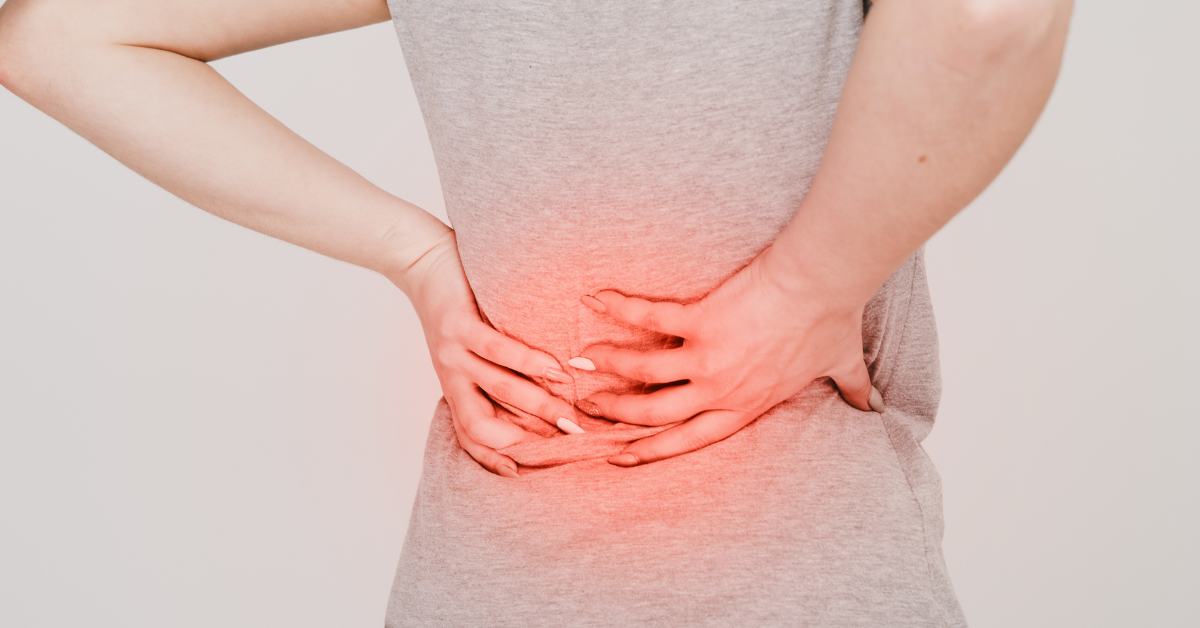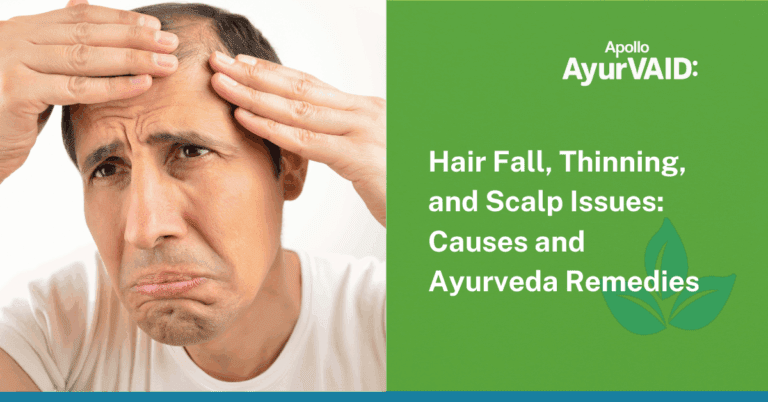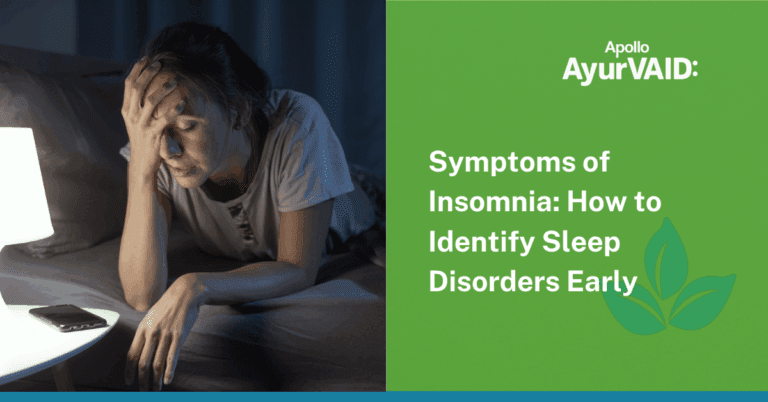Introduction
Lower Back Pain (LBA- lower back ache) is the most common musculoskeletal disorder in all age groups. It is known as Kati shoola in Ayurveda where Kati means lower back region, and Shoola refers to pain. It is caused by the increase in Vata dosha in the lumbar region leading to rigidity, restricted mobility, and shooting pain. For mild discomfort, home therapy for lower back pain can often provide sufficient relief but chronic or severe pain requires Ayurveda interventions to prevent it from worsening and developing complications.
In this blog, we’ll delve into various lower back pain treatments offered by Ayurveda. An effective Ayurveda approach to managing lower back issues includes a combination of Panchakarma,Therapy for lower back strain, therapeutic exercises, and lifestyle adjustments. Ayurvedic backache treatment focuses on addressing both the symptoms and the root causes, promoting natural recovery and long-term relief.

Back Ache - Ayurvedic Treatment
The remedy for lower back pain in Ayurveda involves Panchakarma and external therapies that balance the aggravated Vata dosha and help tone the lower back muscles.
- Kati Vasti – warm medicated oil retained over the lower back decreases pain, inflammation, and muscle contraction and increases flexibility.
- Abhyanga – oil therapy using specific medicated oils pacify Vata dosha, and improves circulation. Special attention is given to the lower back region using precise strokes.
- Patra Pinda Sweda – In this therapy, herbal leaves are made into bundles, heated with medicated oils, tied in a muslin cloth, and applied over the affected area. This treatment helps reduce pain and stiffness while promoting tissue healing.
- Taila Dhara – Warm-medicated oil is constantly showered over the back. It is most beneficial for chronic back pain.
- Shastika Shali Pinda Sweda – A special therapy in which red rice (Njavara), cooked in milk and some herbs is applied as a bolus over the affected part. It helps to build up muscles and also helps to reduce inflammation.
- In severe conditions, Panchakarma treatments such as Virechana (therapeutic purgation) and Vasti (enema) are also administered to bring back the dosha balance and treat the condition at the root cause.
Apollo AyurVAID’s evidence-based, protocol-driven approach provides exceptional outcomes in low back pain. We utilize classical Ayurveda medications and therapies, with customized functional rehabilitation plans, diet, and lifestyle modifications. Our whole person and end-to-end care provides sustained relief. We focus on the root cause, long-term recovery, and overall well-being.
Home therapy for lower back pain
Home treatments for back pain can be effective and completely simple to employ. These remedies can help reduce pain and prevent worsening of the condition if it is mild. In severe low back pain or pain associated with Sciatica, Lumbar Spondylosis, etc, remedies should be followed after consulting an Ayurveda physician and undergoing prescribed treatments. Following are a few effective home remedies –
- Applying medicated oil or a heating pad on the lower back relieves muscle pain.
- Massaging the lower back with warm mustard or sesame oil promotes blood circulation and relieves tension.
- Gentle stretching or yoga improves flexibility, strengthens the back muscles, and reduces pain.
- Incorporating spices such as turmeric, ginger, fennel, cumin, and coriander into your cooking can offer anti-inflammatory benefits and help alleviate pain.
- Sitz bath in warm water or a tub filled with medicated decoction is effective in lower back pain.
- Applying a poultice of herbs like fenugreek or eucalyptus provides localized pain relief.
Lifestyle Adjustments:
The following lifestyle modifications can help alleviate lower back pain to a great extent. These practices are effective in pain alleviation and maintaining a healthy spine.
- Maintaining a healthy weight through a balanced diet and regular exercise helps reduce pressure on the spine and prevents lower back strain.
- Yoga and gentle stretching help to increase flexibility, tone the back muscles, and reduce pain.
- Meditation, deep breathing, and yoga reduce stress that may result in back pains.
- Moderate exercise for 30 minutes stretches back muscles and keeps the spine healthy.
- Avoid bending over or lifting heavy objects, as these actions may strain the spine.
- Maintaining proper posture while sitting for a long avoids complications affecting the back.
- Use chairs with lumbar support and sit properly, do not put pressure on your back, and try to take breaks from long sitting hours.
- Stretching or walking also helps to avoid stiffness of the muscles on your back and improves blood circulation
- Night sleep of 7 to 8 hours is important in repairing the tissues, quickening the healing process, and reducing the chances of developing back pain.
Dietary Recommendations:
Here are some dietary recommendations for managing lower back pain.
- Easy-to-digestible food articles and grains like rice, barley, black gram, and wheat are beneficial.
- Fruits such as grapes, pomegranates, and gooseberry are nourishing in nature.
- Leafy greens, carrots, and beets are particularly beneficial due to their anti-inflammatory properties.
- Consuming heavy, cold, or difficult-to-digest foods like dry meat, and excessive cold drinks should be avoided as they aggravate Vata
- Use moderate amounts of healthy fat like ghee to maintain the joint lubrication.
- Utilizing spices like turmeric, ginger, and black pepper in the diet imparts anti-inflammatory and analgesic effects.
- Drink enough water to maintain hydration.

Conclusion
According to Ayurveda the methods to overcome lower back pain involve panchakarma treatments, changes in diet, and lifestyle. Therapies and home remedies help to prevent recurrence. All these treatments are to be done under the supervision of a qualified Ayurveda doctor. By addressing the root cause, we ensure significant pain relief, improvement in joint functions, and overall quality of life.
References
- K.V, K et al. (2024). AYURVEDIC MANAGEMENT OF CHRONIC NON-SPECIFIC LOW BACK PAIN W.S.R KATI SHOOLA – A CASE REPORT. International Ayurvedic Medical Journal. https://doi.org/10.46607/iamj2412052024
- Neelam et al. (2023). A REVIEW ARTICLE- IMPORTANCE OF PATHYA-APATHYA IN DAILY LIFE. International Ayurvedic Medical Journal. https://doi.org/10.46607/iamj0711062023
- Jensen, M B (2017). [Yoga as treatment for patients with chronic, non-specific lower back pain]. Ugeskrift for laeger, 179(22) https://pubmed.ncbi.nlm.nih.gov/28553920
- Verma, P et al. (2024). Approach and Management Strategies for Radicular Low Back Pain in Ayurveda: The Classical and Emerging Methods. International Journal of Life Science and Pharma Research. https://doi.org/10.22376/ijlpr.2024.14.2.l1-l7
- Shivashimpar, P, Chavan, S (2024). A review article on Katrigraha vis-à-vis Mechanical low back pain and its management through Ayurveda. Journal of Ayurveda and Integrated Medical Sciences. https://doi.org/10.21760/jaims.9.1.18






